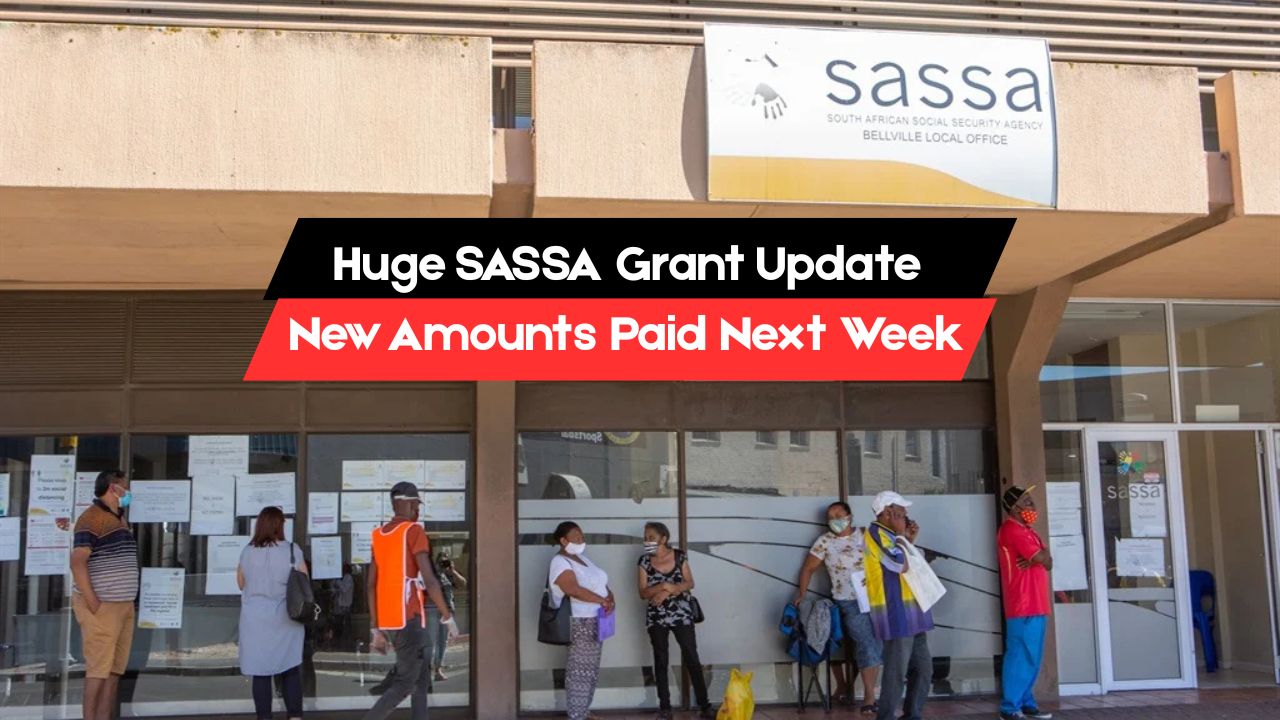Stage 6 loadshedding in South Africa: As South Africans brace for another round of power cuts starting 24 July, the nation is preparing for the looming challenges that come with Stage 6 loadshedding. With the promise of up to eight hours of power outages daily, millions are revisiting their strategies to cope with these frequent disruptions. From businesses to households, the impact of these outages is being felt across the board. The primary concern remains the ability to maintain productivity, preserve perishable goods, and ensure safety during these dark hours. In a country already grappling with economic challenges, the additional strain of extended power outages could have far-reaching consequences.
Understanding the Impact of Stage 6 Loadshedding
The Stage 6 loadshedding is not just a temporary inconvenience but a significant disruption that affects every facet of life in South Africa. Businesses, especially small and medium enterprises, suffer the most as they rely heavily on electricity for daily operations. The extended outages can lead to substantial financial losses, affecting both revenue and employment rates. Households, on the other hand, face the challenge of planning daily activities around the loadshedding schedule. Education is also impacted, with students finding it difficult to keep up with studies amidst the constant power interruptions. The healthcare sector, although equipped with generators, is not spared from the strains of increased operational costs and the risk of equipment failure during transitions between power sources.
- Impact on small businesses
- Challenges for households
- Educational disruptions
- Healthcare sector strains
- Increased operational costs
- Risk of equipment failure
- Financial losses
Preparing for Extended Power Outages
While loadshedding is a recurrent issue, preparation can mitigate some of the adverse effects. Households are encouraged to invest in alternative power sources such as generators, solar panels, or battery storage systems. Businesses are advised to develop contingency plans to ensure the continuity of operations. It’s also crucial to stay informed about the loadshedding schedule and plan activities accordingly. Simple measures such as keeping devices charged, stocking up on essential supplies, and having a backup lighting solution can significantly ease the inconvenience caused by power cuts. Community initiatives, such as shared resources or group purchases of backup systems, can also provide relief.
| Alternative Power Source | Initial Cost | Maintenance | Availability | Suitability |
|---|---|---|---|---|
| Generators | High | Moderate | High | Businesses |
| Solar Panels | High | Low | Moderate | Households |
| Battery Systems | Moderate | Low | High | Both |
| Gas Stoves | Low | Low | High | Households |
| UPS Systems | Moderate | Low | High | Businesses |
| Inverters | Moderate | Low | High | Both |
| Wind Turbines | High | Low | Low | Rural Areas |
| Hydro Generators | High | Low | Low | Riverside Areas |
Strategies for Businesses During Loadshedding
Businesses need to adapt to the new normal of frequent power outages. Investing in robust backup systems is crucial to ensure that operations can continue with minimal disruptions. Companies should consider digital transformation strategies, such as cloud-based services, which can provide greater flexibility and resilience. Moreover, employee training on energy-saving practices and efficient resource management can contribute to reducing the overall impact. Businesses can also explore partnerships with other companies to share resources and reduce costs associated with power outages. By building a sustainable energy strategy, businesses can not only survive but also thrive despite the challenges posed by loadshedding.
 SASSA Revised Grant Amounts and Payout Timeline for Next Week - SASSA Beneficiaries Take Note
SASSA Revised Grant Amounts and Payout Timeline for Next Week - SASSA Beneficiaries Take Note
- Invest in backup systems
- Embrace digital transformation
- Employee training
- Resource management
- Partnerships with other companies
Household Tips for Managing Loadshedding
For households, managing loadshedding effectively involves a mix of planning, resourcefulness, and adaptability. It’s essential to keep a flashlight or battery-powered lantern in an easily accessible location. Cooking meals in advance and storing them in insulated containers can help ensure that food remains warm during outages. Families might also consider investing in a gas stove or portable cooking devices. Additionally, maintaining a well-stocked pantry with non-perishable items will ensure that food supplies are sufficient during prolonged outages. Lastly, keeping a printed schedule of the loadshedding timetable can help in planning daily activities around power availability.
- Keep a flashlight handy
- Cook meals in advance
- Invest in a gas stove
- Stock up on non-perishable items
- Print the loadshedding schedule
- Use insulated containers
FAQs on Coping with Stage 6 Loadshedding
How can I prepare for Stage 6 loadshedding?
Invest in backup power solutions and stay informed about schedules.
- How does loadshedding affect businesses?
It disrupts operations, leading to financial losses. - What are the best alternative power sources?
Solar panels, generators, and battery systems are popular choices. - How can I manage food supplies during outages?
Use insulated containers and stock non-perishable items. - What community initiatives can help during loadshedding?
Shared resources and group purchases of backup systems.
Understanding the Loadshedding Schedule
Staying informed about the loadshedding schedule is critical for effective planning. South Africans can access the schedule through various platforms, including mobile apps and utility provider websites. The schedule is typically divided into blocks, indicating when specific areas will experience power cuts. By monitoring updates and changes to the schedule, individuals and businesses can plan their activities to minimize disruption. Additionally, joining community groups that share real-time updates can be a valuable resource for staying informed. This proactive approach helps reduce the stress and frustration associated with unexpected outages.
| Time Block | Area 1 | Area 2 | Area 3 |
|---|---|---|---|
| 00:00 – 02:00 | Scheduled | Off | Off |
| 02:00 – 04:00 | Off | Scheduled | Off |
| 04:00 – 06:00 | Off | Off | Scheduled |
| 06:00 – 08:00 | Scheduled | Off | Off |
| 08:00 – 10:00 | Off | Scheduled | Off |
| 10:00 – 12:00 | Off | Off | Scheduled |
| 12:00 – 14:00 | Scheduled | Off | Off |
Community Support During Loadshedding
Community support plays a vital role in navigating the challenges of loadshedding. By coming together, communities can share resources, provide moral support, and create innovative solutions to common problems. Community centers can serve as gathering points during extended outages, offering a place for socializing and mutual assistance. Local businesses can collaborate on initiatives to promote energy conservation and share backup power sources. Moreover, neighborhood groups can organize workshops to educate residents on efficient energy use and alternative power options. Through collective efforts, communities can enhance resilience and reduce the overall impact of loadshedding.
- Share resources
- Provide moral support
- Create innovative solutions
- Organize workshops
Exploring Renewable Energy Solutions
As loadshedding continues to challenge South Africa, exploring renewable energy solutions becomes increasingly important. Solar energy, in particular, presents a viable alternative for both businesses and households. By investing in solar panels, individuals can harness the power of the sun to meet their energy needs, reducing dependence on the national grid. Wind and hydroelectric energy also hold potential, especially in rural and riverside areas. Government incentives and subsidies can further encourage the adoption of renewable energy, providing financial support for those seeking to make the transition. Embracing sustainable energy solutions not only addresses the current crisis but also contributes to a greener and more resilient future.
- Invest in solar panels
- Consider wind energy
- Explore hydroelectric options
- Utilize government incentives
- Support a greener future
FAQs About Loadshedding and Renewable Energy
What is the role of renewable energy in reducing loadshedding?
It provides alternative power sources, reducing dependence on the grid.
Can government incentives help with renewable energy adoption?
Yes, they can reduce the initial cost and encourage investment.
Are solar panels a viable solution for urban households?
Yes, they are effective in urban settings with adequate sunlight.
What are the barriers to adopting renewable energy?
High initial costs and lack of awareness are common barriers.
How can communities support renewable energy initiatives?
Through collective buying and shared installations.









